Meet your new favorite condiment! Whether you’re new to preserved lemons or have been a fan for quite some time, we know you’re going to love how easy it is to make them at home.
Preserved lemons are lemon peels that have been preserved or fermented using salt. The difference between preserved lemons and fresh lemons is preserved lemons have been treated with a concentrated brine made of salt and lemon juice.
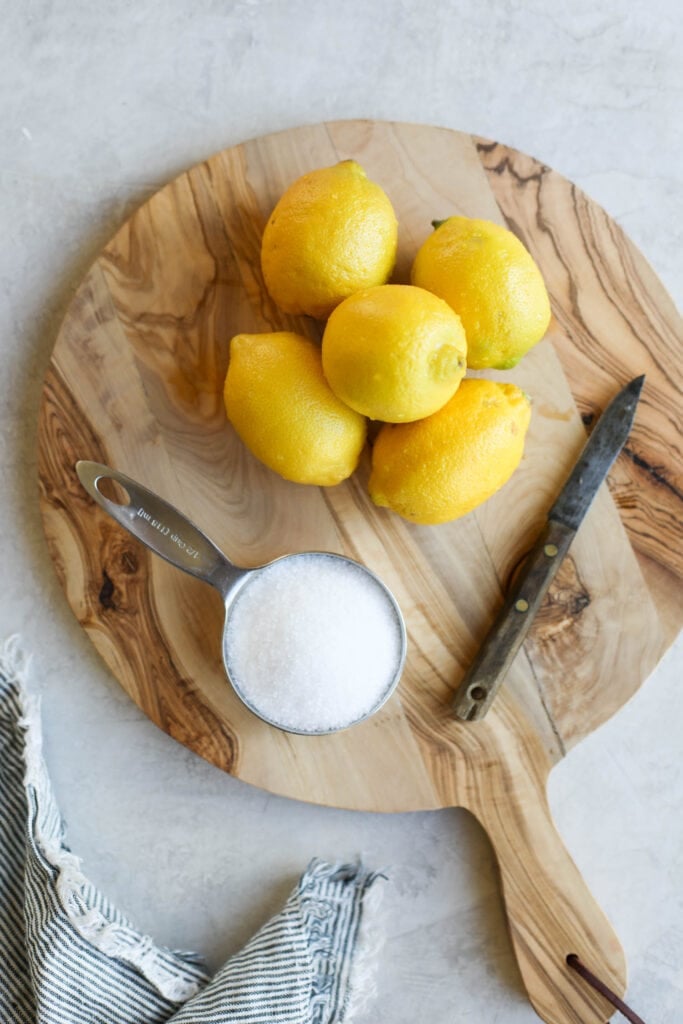
Fresh lemons are quartered and rubbed with salt, then packed tightly into a jar where they are left to ferment for 3 weeks. During the fermentation process, the lemon peels undergo a chemical process that results in their softening, and the flavor of the lemons changes. We like to think of it like food magic!
What do preserved lemons taste like? Preserved lemons taste like lemons — tart and slightly sweet, but salty and briny at the same time. Their lemon flavor is more mellow than that of fresh lemons, and the brine gives them a savory umami quality.
Preserved lemons are a delicious way to add tangy acidity to salad dressings, salads, soups, or stews and are a bright and welcome addition to any charcuterie board. We love to top our 5-Ingredient Garlic Hummus with finely minced preserved lemons and a drizzle of olive oil for an instantly elevated snack or appetizer.
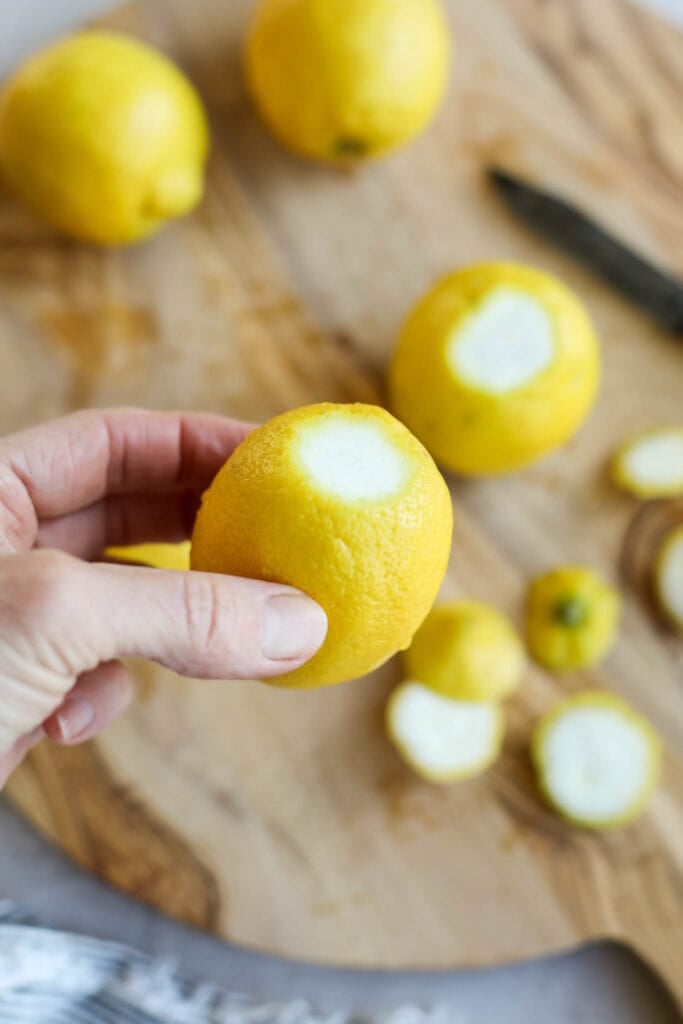
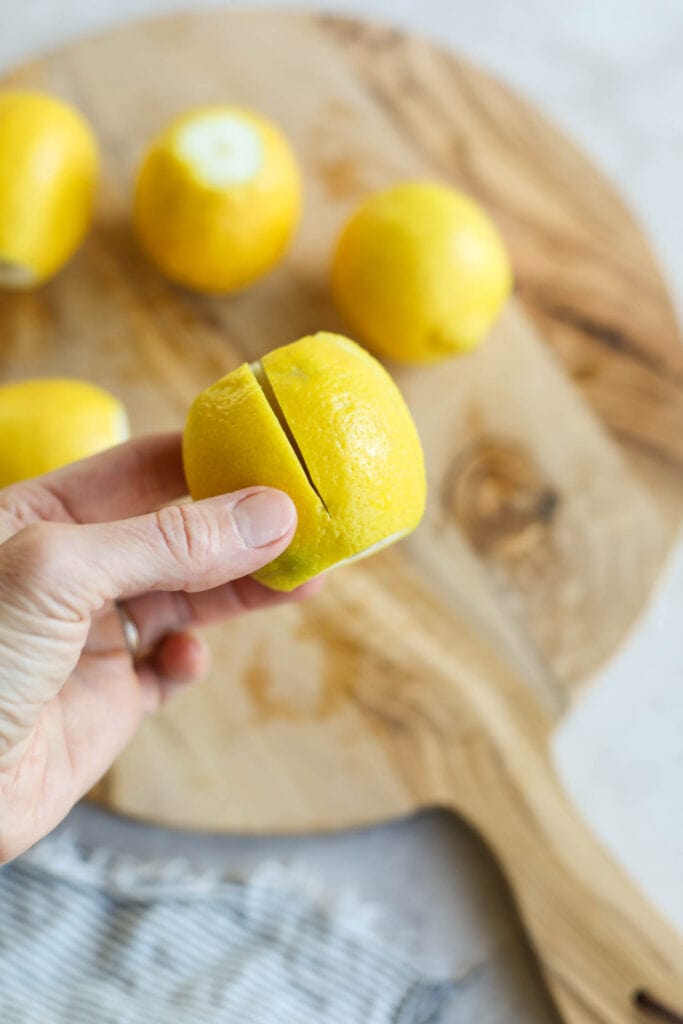
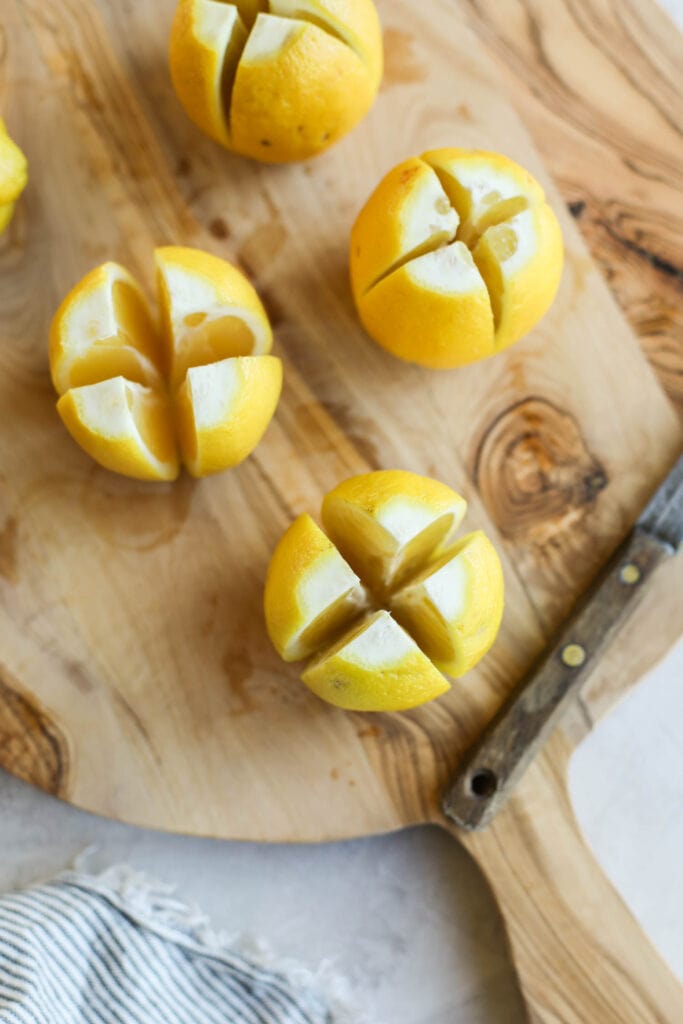
Here’s what you’ll need:
- Fresh lemons: Regular lemons or Meyer lemons will both work. We recommend using organic lemons if possible, since you’ll consume the peel and rind (which are more exposed to pesticides than the inside of the lemon).
- Sea salt: Use unrefined salt without added iodine or Kosher salt .
- Glass jar: You can use a one-quart mason jar, canning jar, Weck jar, or upcycled pickle jar with a lid.
- Fermentation weight or small plastic zip-top bag: The weight is used to keep the lemons submerged in the brine during preservation.
What kind of lemons are best for preserving?
We recommend buying organic Eureka (regular lemons) or Meyer lemons for this recipe, since you will be consuming the lemon peel.
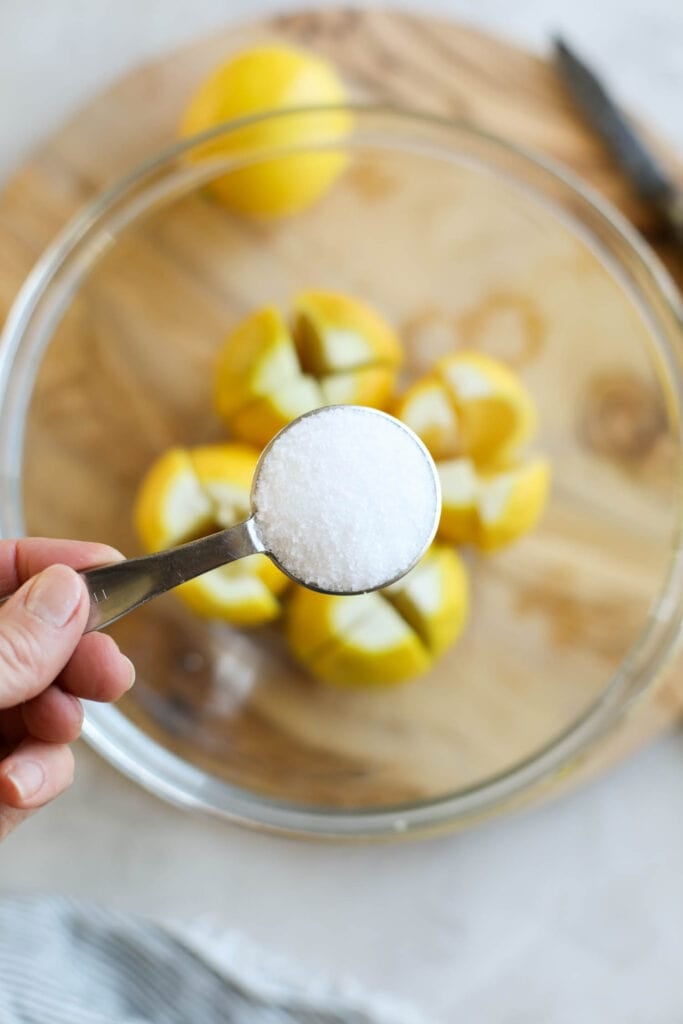
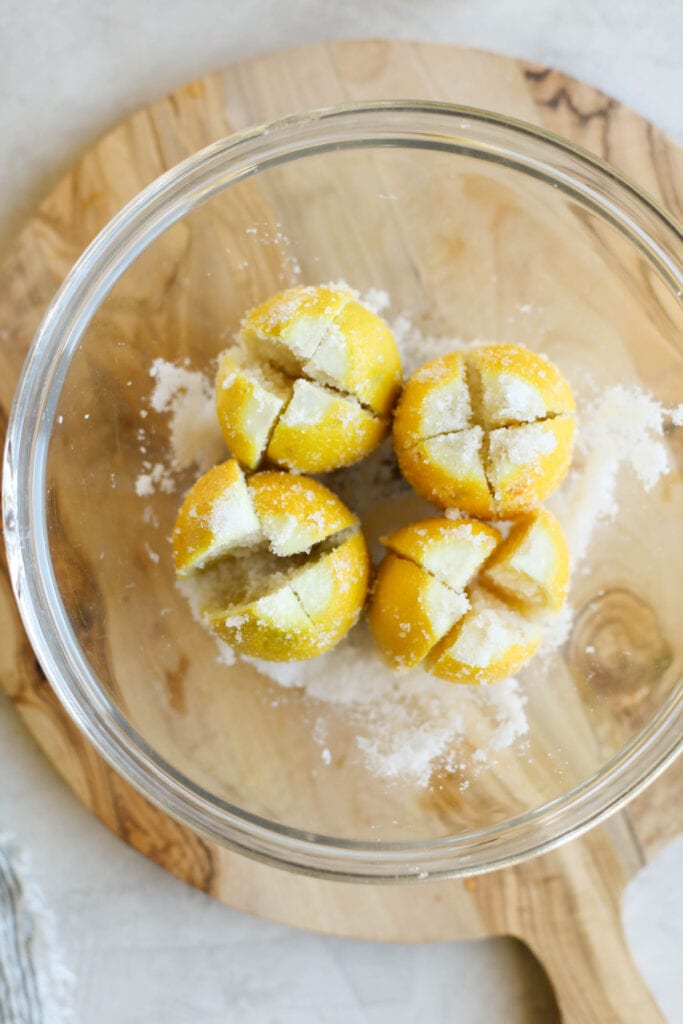
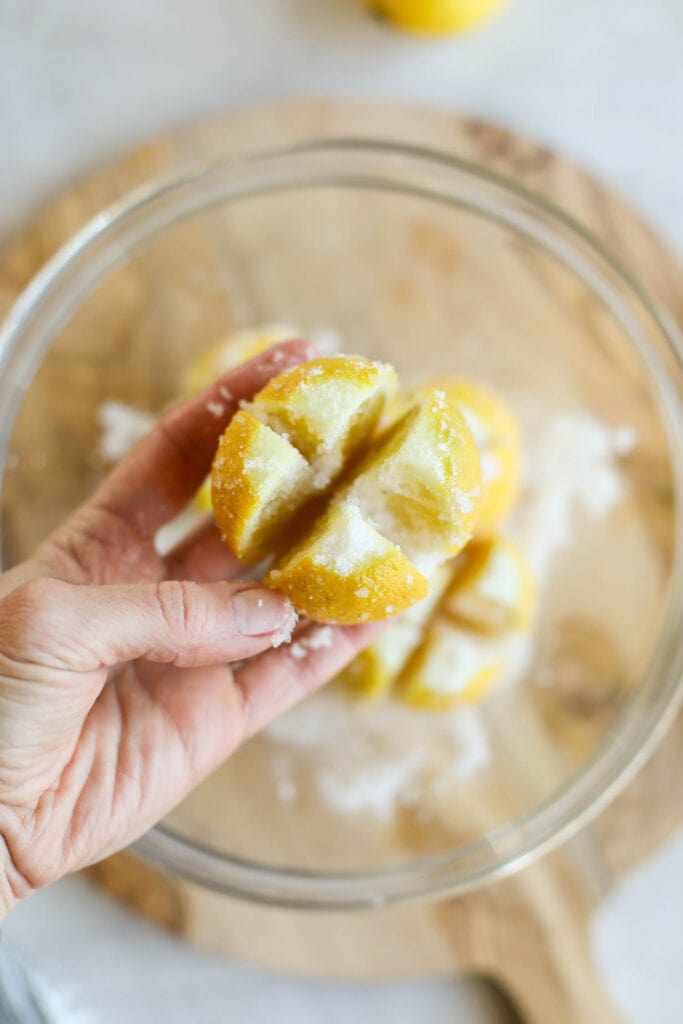
Ingredients
- 6 whole lemons, divided
- ½ – 1 cup fine sea salt or Kosher salt
- Fresh lemon juice
- Wash lemons and pat dry with a paper towel.
- Using a knife, trim ¼ inch from each end of 4 lemons, reserving the other 2 for Step 10.
- Stand the lemon up on one end and, using a paring knife, cut the lemon in half, stopping just before cutting all the way through. Turn the lemon and make another cut (as if cutting it into quarters), again stopping the cut before you are all the way through.
- Repeat for all of the lemons.
- Remove the seeds.
- Place the lemons in a medium bowl and sprinkle with ½ cup salt. Rub the salt into the inside and outside surfaces of the lemons. Add more salt as needed to cover all of the surfaces liberally.
- Remove and discard any other seeds remaining.
- Transfer the salted lemons and the salt to a clean one-quart glass jar.
- Using a tamper, a wooden spoon, or your clean hands, press the lemons firmly into the jar so that the juice releases from the fruit and mixes with the salt to create a brine. Keep pressing until the fruit is submerged.
- Sprinkle 2 tablespoons of salt over the surface of the lemons, then add freshly squeezed lemon juice (from 1-2 remaining lemons) to the jar, submerging them in the brine.
- Add a pickling weight to the jar if you have one, or create a weight using a clean sandwich-size zip-top bag filled with water. To create a weight, fill the bag with about 1 cup of water and press out as much air as possible before sealing.
- Slip the bag into the jar and jiggle it a few times so that the bag’s surface covers the submerged lemon.
- Place a lid very loosely on the jar.
- Place the jar on the countertop at room temperature out of direct sunlight for 21 days. If the lemons are not under the brine at any time, remove the weight and press the lemons back down using a wooden spoon and clean hands.
- Rinse the bag with cold water and return it to the jar.
- After 21 days, remove the weight and screw a lid onto the jar.
- Store in the refrigerator for up to 12 months.
To serve the lemons:
- Remove a piece of preserved lemon peel from the jar. With your fingers, pull away the lemon flesh to expose the rind (the white pith and yellow peel) and discard*.
- Rinse the rind under cold water to remove the brine and some of the saltiness.
- Slice, chop, or mince the lemon rind before adding it to salads, tagines, soups, or stews. Preserved lemons also make a great addition to charcuterie boards.
Last Step! Please leave a review and rating letting us know how you liked this recipe! This helps our business thrive so we can continue providing free recipes and high-quality content for you.
Notes
You can use the pulp, but note that it is very salty, so a little goes a long way. We recommend chopping the pulp before pressing it through a fine-mesh strainer. Add the juice to salad dressings or cocktails such as bloody Mary’s, where you’d typically add lemon juice and salt. If adding the unstrained pulp to cooked dishes, it’s best added to soups or stews that require long simmering.
Nutrition Information
- Serving Size: 15 g
- Calories: 5
- Fat: 0 g
- (Sat Fat: 0 g)
- Sodium: 200 mg
- Carbohydrate: 1 g
- (Fiber: 0 g
- Sugar: 0 g)
- Protein: 0 g
- Unsaturated Fat: 0 g
- Trans Fat: 0 g
Dietary
© The Real Food Dietitians
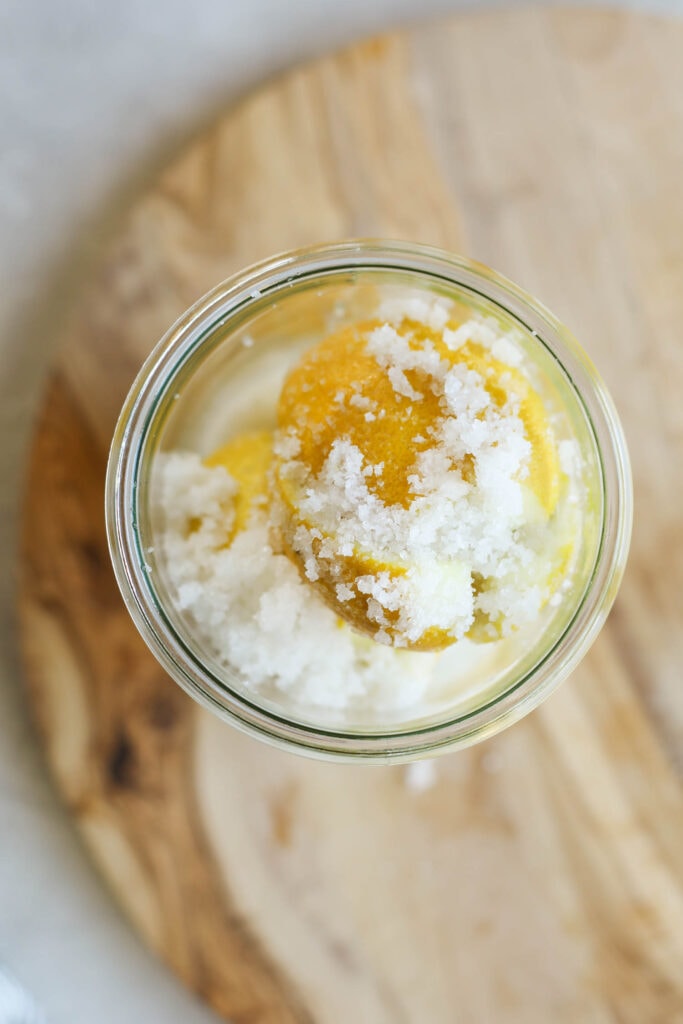
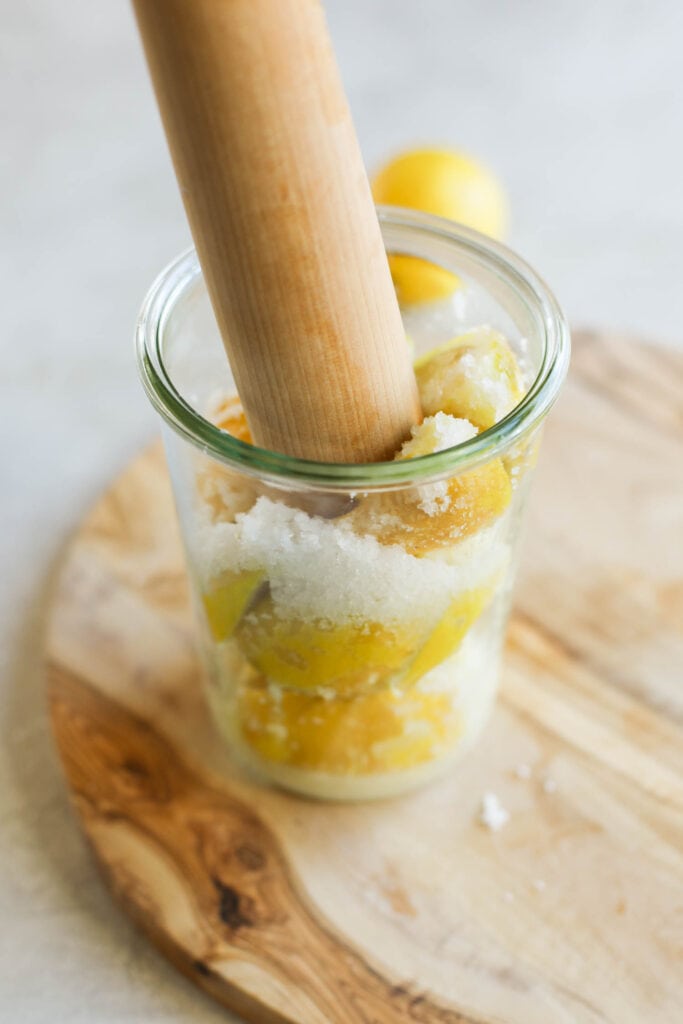
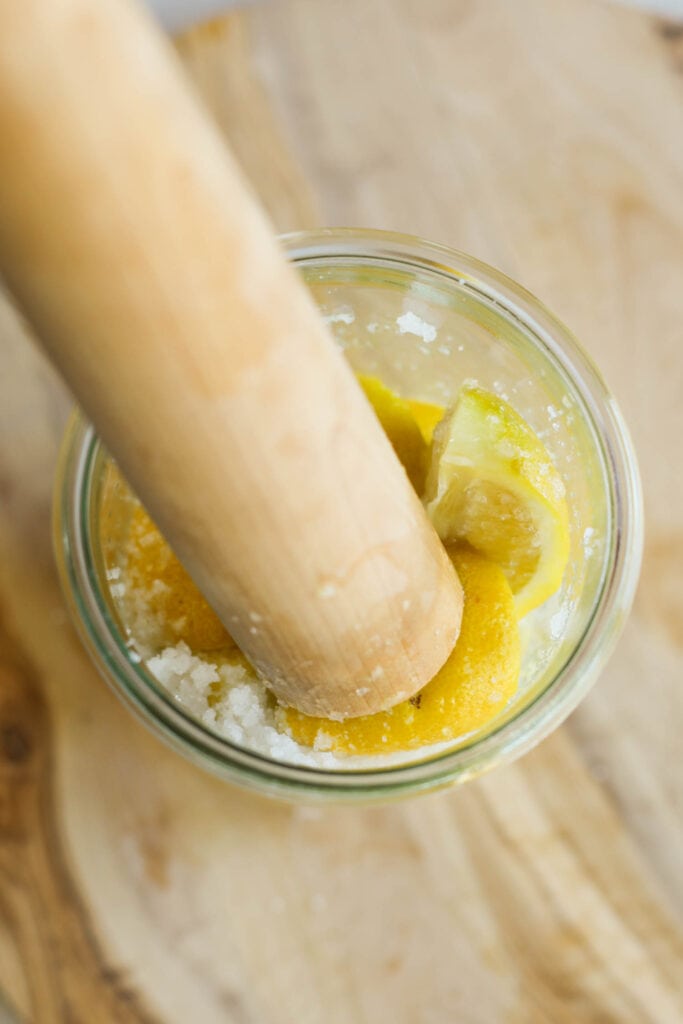
Best Ways To Use Preserved Lemons
Preserved lemons are a great way to add a bright, flavorful punch to many dishes. We love to dice them finely to add to a salad, soup, or stew and they are delicious blended into salad dressings that call for lemon juice.
- The rind of the lemon is meant to be enjoyed as a flavorful condiment (think pickle on a charcuterie board) or added to dressings or marinades or even stirred into soup or stew.
- For slow-cooked dishes such as tagines, soups, or stews, we recommend adding preserved lemons during the cooking process.
- For sheet pans meals with Mediterranean flavors, we suggest adding them at the table as a condiment.
While many recipes, including our own, call for you to discard the pulp and use only the lemon peel and rind, it is possible to use the pulp. Be warned that the pulp is exceptionally salty, so it’s best to use just a little bit and add more as you go.
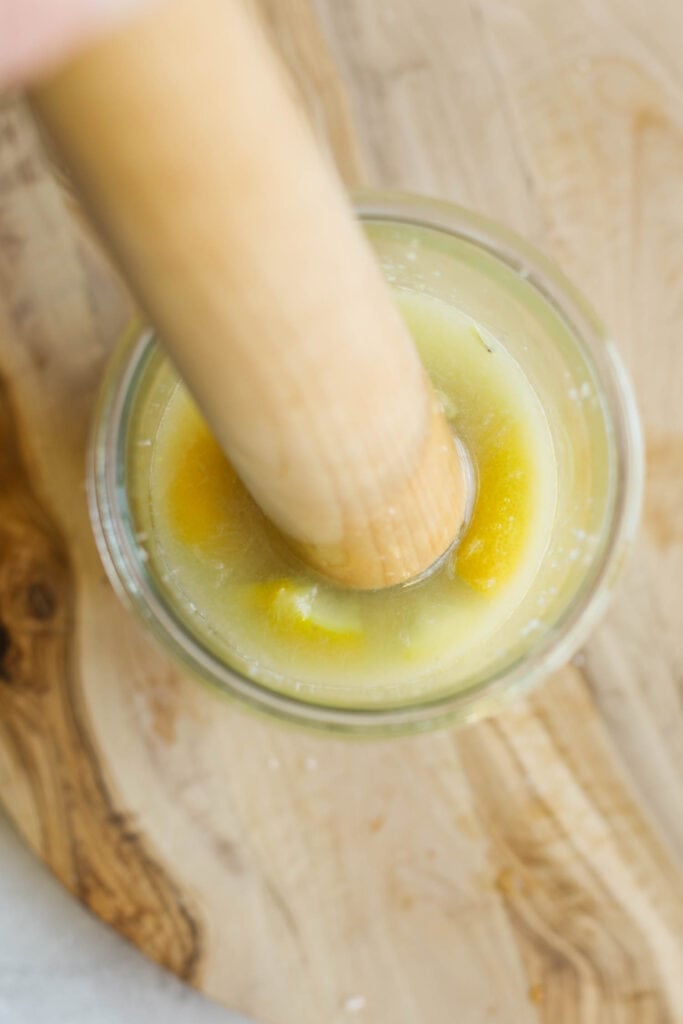
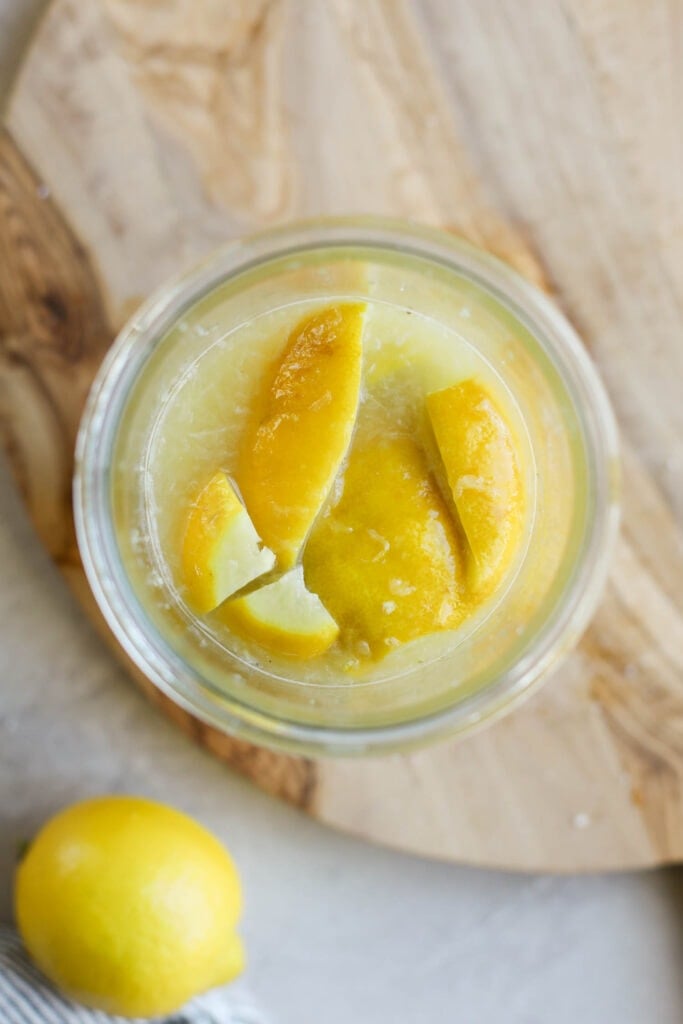
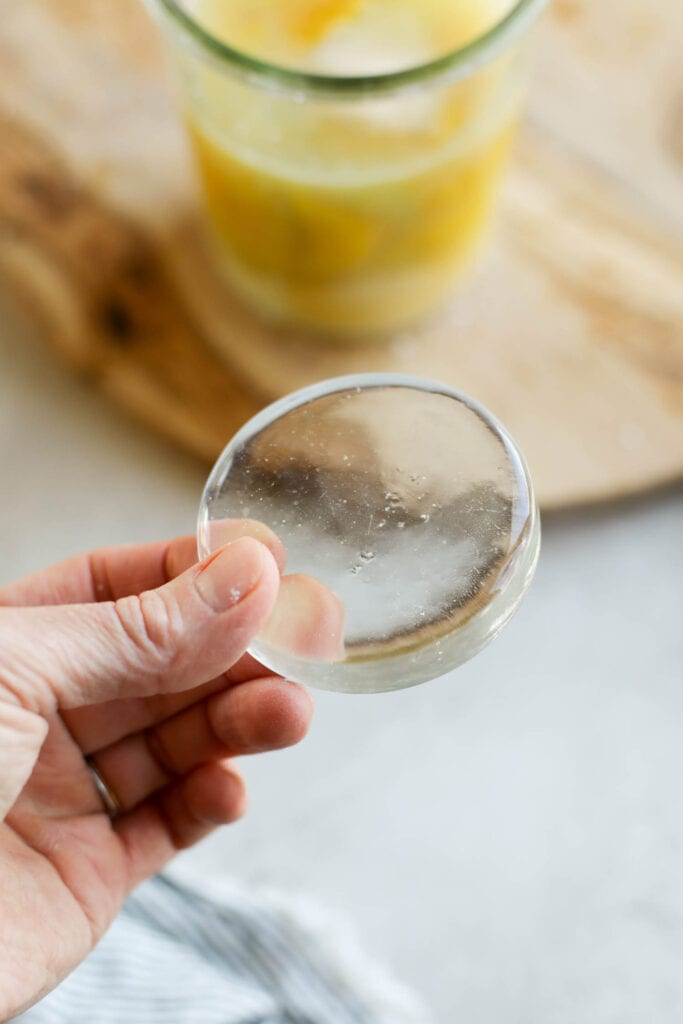
What else can you make with Preserved Lemons?
Our method for making preserved lemons is just lemons, salt, and lemon juice. But there are many recipes to add coriander, black peppercorns, cinnamon sticks, or a bay leaf that add complexity to preserved lemons.
Here are a few yummy ways to use preserved lemons:
- Quinoa Kale Salad with Blueberries and Feta
- Sheet Pan Veggie Shawarma with Lemon-Tahini Dressing
- Saucy Beef and Lentil Meatballs
- Sheet Pan Mediterranean Chicken and Veggies
- Curry Chicken Salad
- Ranch Dressing
- Mediterranean Salmon Bowl
- Honey Mustard Sauce
- Lemon Chicken Marinade
- Pickled Onions
- Sauerkraut
- Tzatziki Sauce
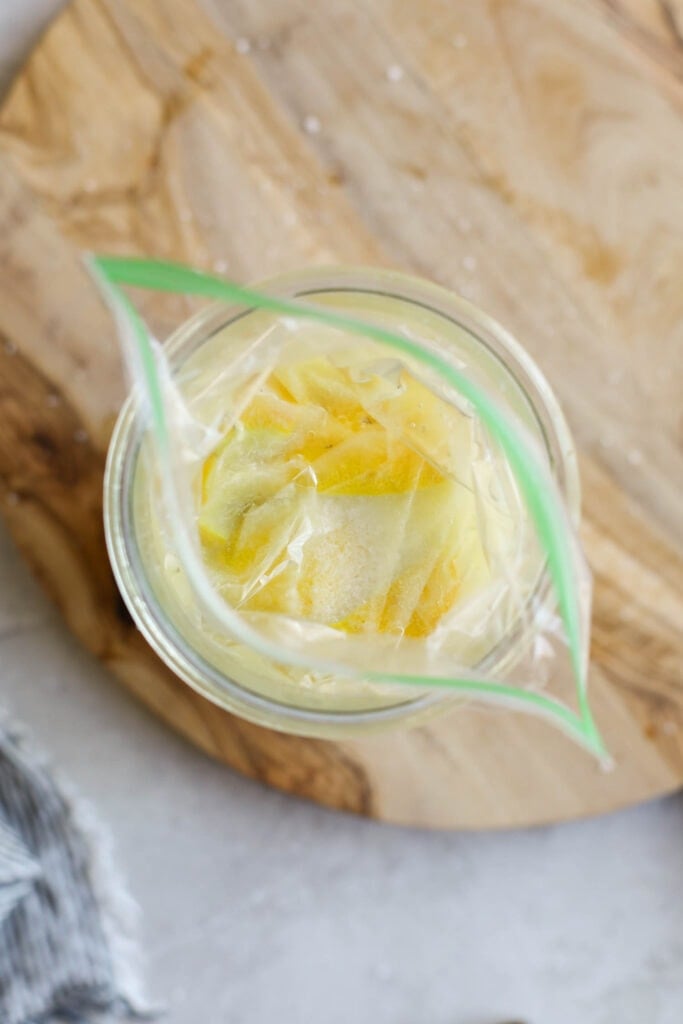
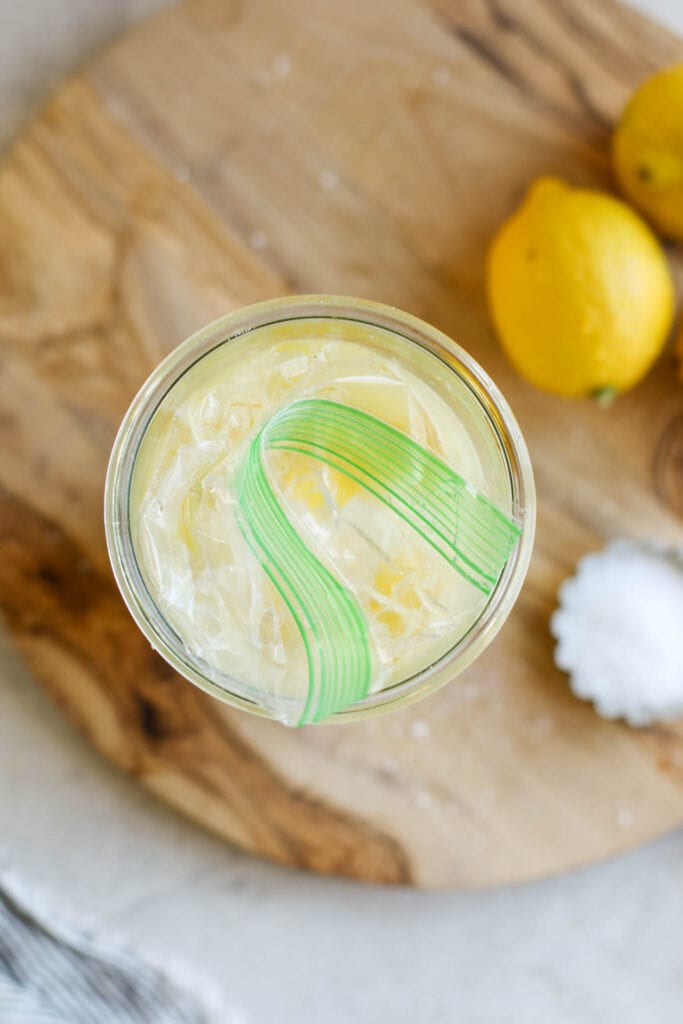
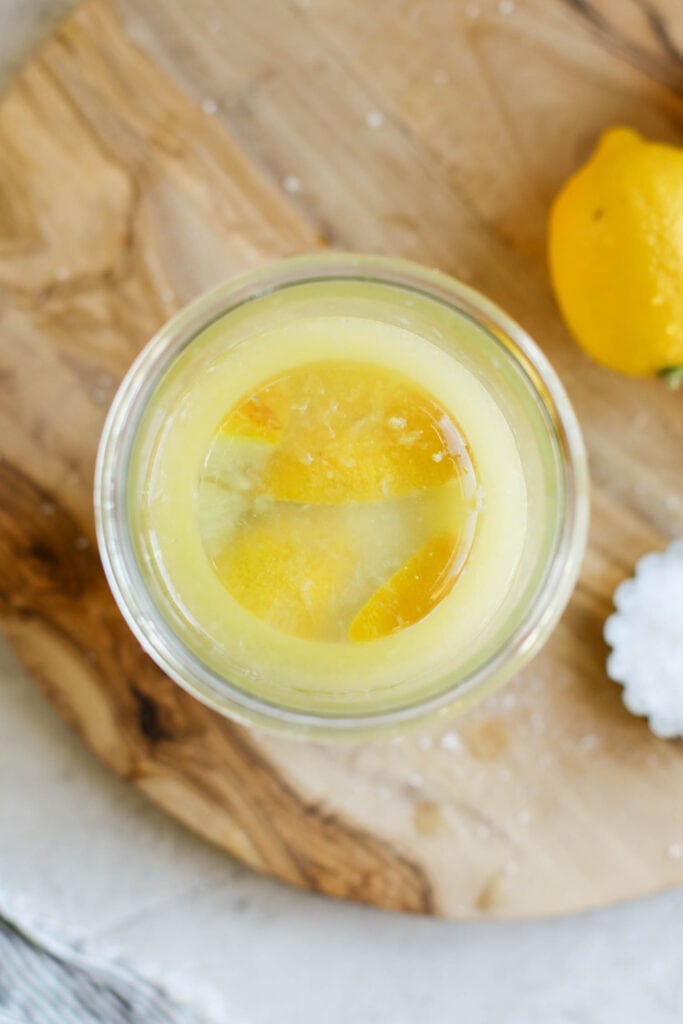
What do preserved lemons look like?
Preserved lemons are bright yellow in color. Often, their yellow color intensifies during the preservation process, although they may start to lose some of their color the longer they are stored. This is normal and does not indicate that they have spoiled, as long as they have been properly stored in the refrigerator.
Health Benefits
Preserved lemons are fermented, which makes them a rich source of vitamin C and a healthy dose of probiotic bacteria. The fermentation process increases the already high level of vitamins.
A diet rich in vitamin C is fantastic for building and sustaining the immune system. Probiotic bacteria, particularly naturally occurring in food, promote a healthy gut. Your gut impacts the health of your entire body, so we’re big fans of a happy gut!
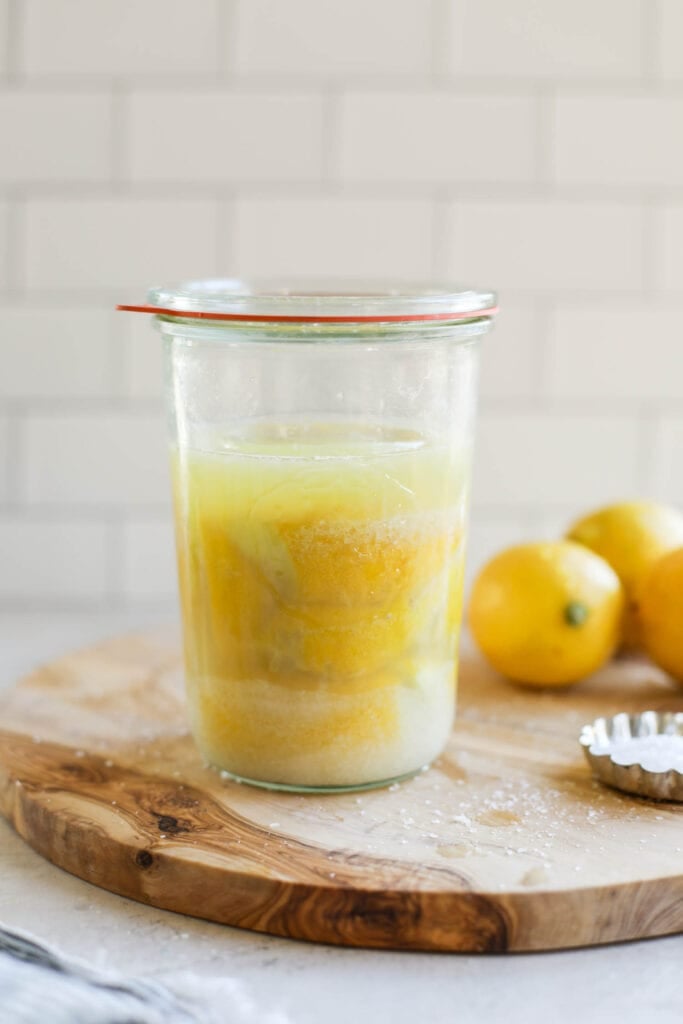
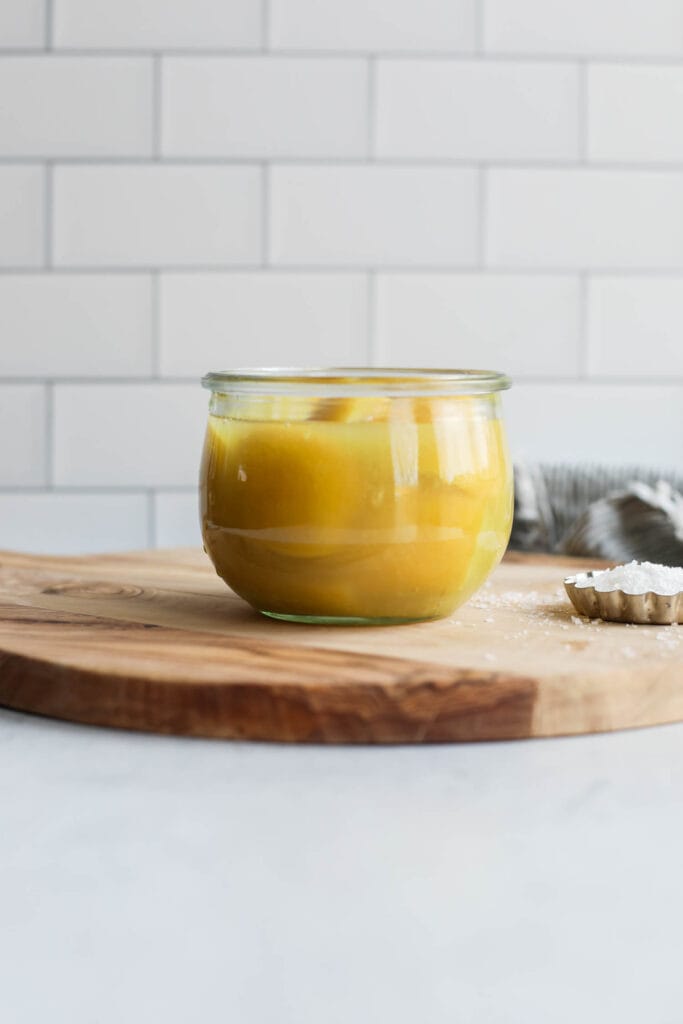
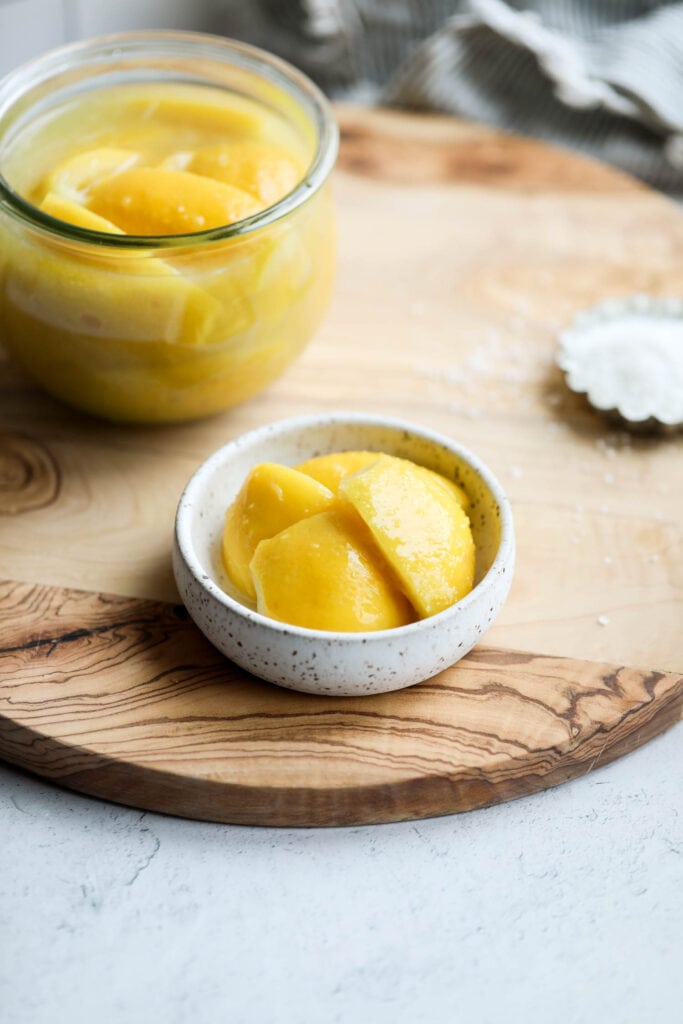
A Brief History
Preserved lemons are believed to have originated in north Africa. This recipe then spread widely across the world to places such as India, the Mediterranean, Middle East, and even southeast Asia.
Thinly sliced or minced bits of preserved lemon are often added to dishes inspired by Middle Eastern or North African Cuisines. They are also a key ingredient in chicken tagines, a traditional dish from Morocco that features chicken braised with flavorful spices, garlic, onions, and olives.
Unlike other fermented foods, preserved lemons are not meant to be consumed on their own. Instead, they are used to season dishes where they add layers of salt, acid, and umami flavors to your home cooking, giving you a more restaurant feel without having to leave a tip.
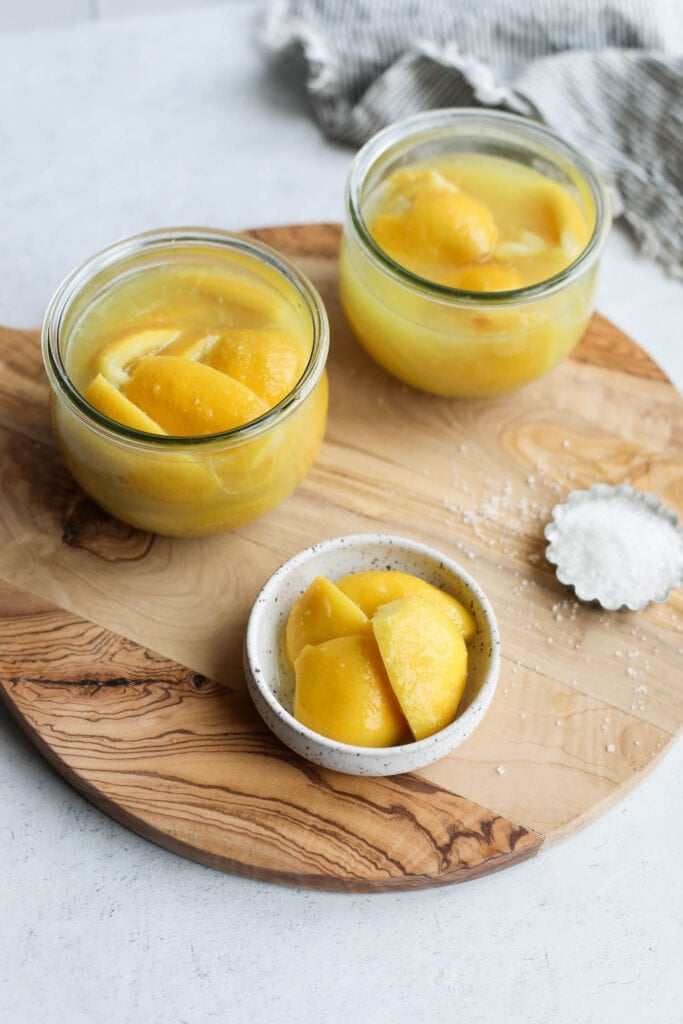
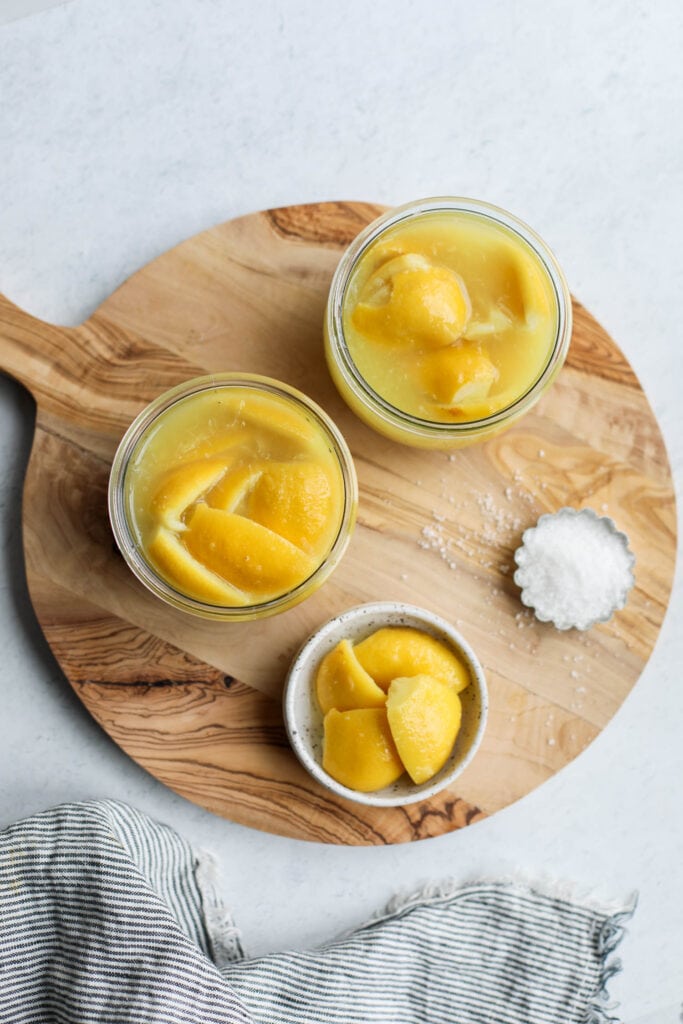
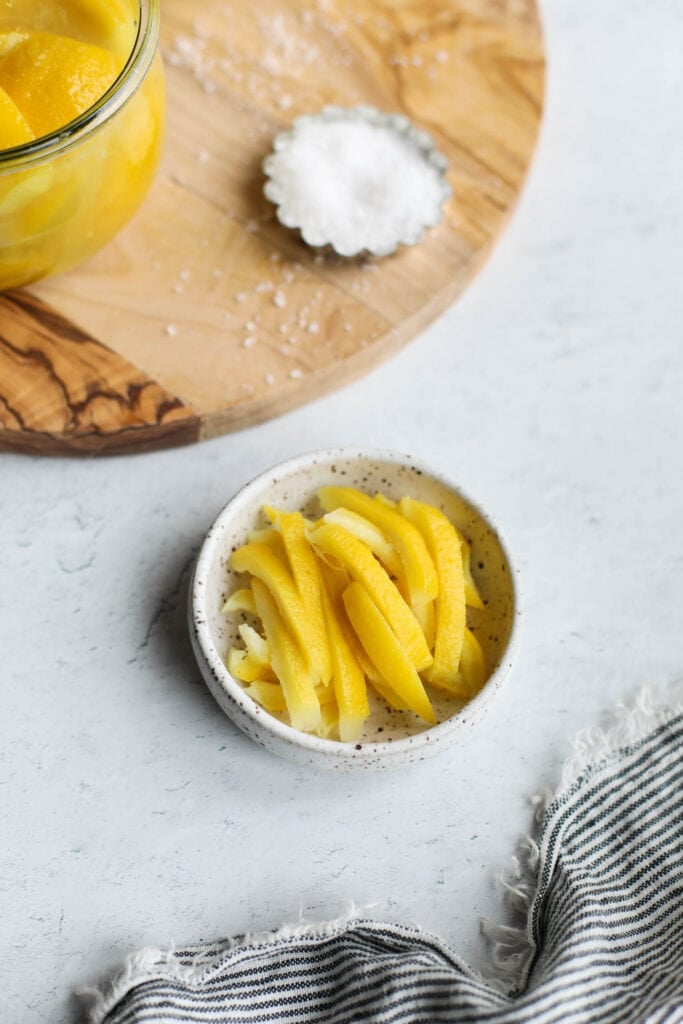
Should you buy preserved lemons or make them yourself?
There are several brands to choose from at the grocery store or from online retailers. But making preserved lemons at home is easy to do.
The hands-on time is less than 30 minutes, but you will need to wait another 21 days or so for the fermentation magic to happen before your preserved lemons are ready to enjoy. If you’re new to fermenting or preserving foods, preserved lemons are a great place to start.
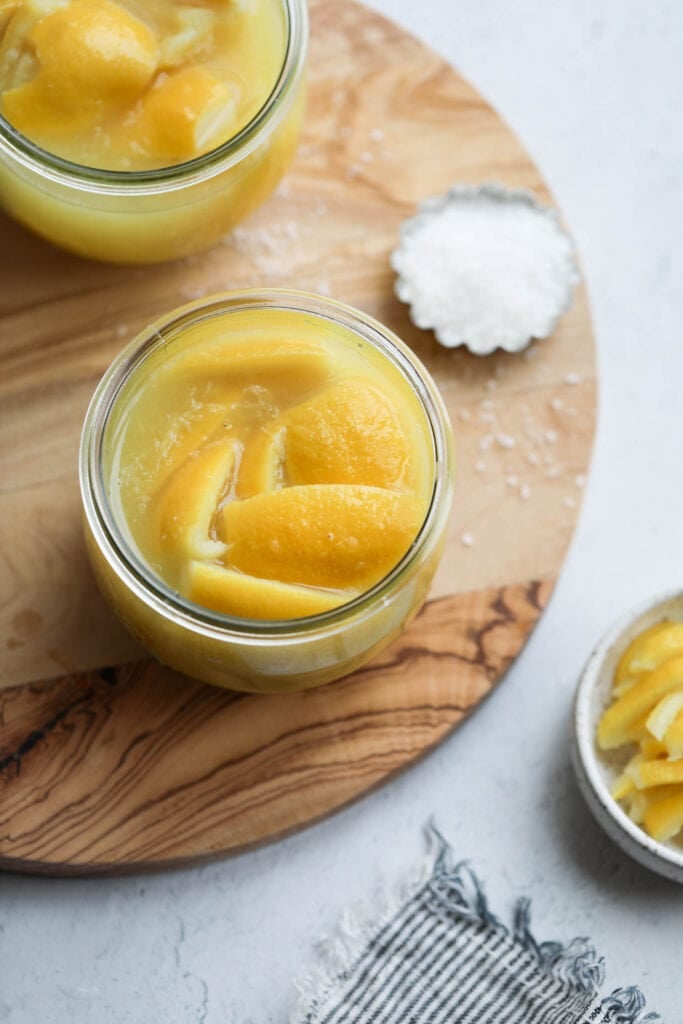
How long do preserved lemons last?
Preserved lemons last up to one year, although it’s best to use them within about 6 months if you can. This preserved lemons recipe produces mouthwatering pickled lemons that will keep in the refrigerator for up to a year.
All photos and content are copyright protected. Please do not use our photos without prior written permission. If you wish to republish this recipe, please rewrite the recipe in your own unique words and link back to the source recipe here on The Real Food Dietitians. Thank you!







